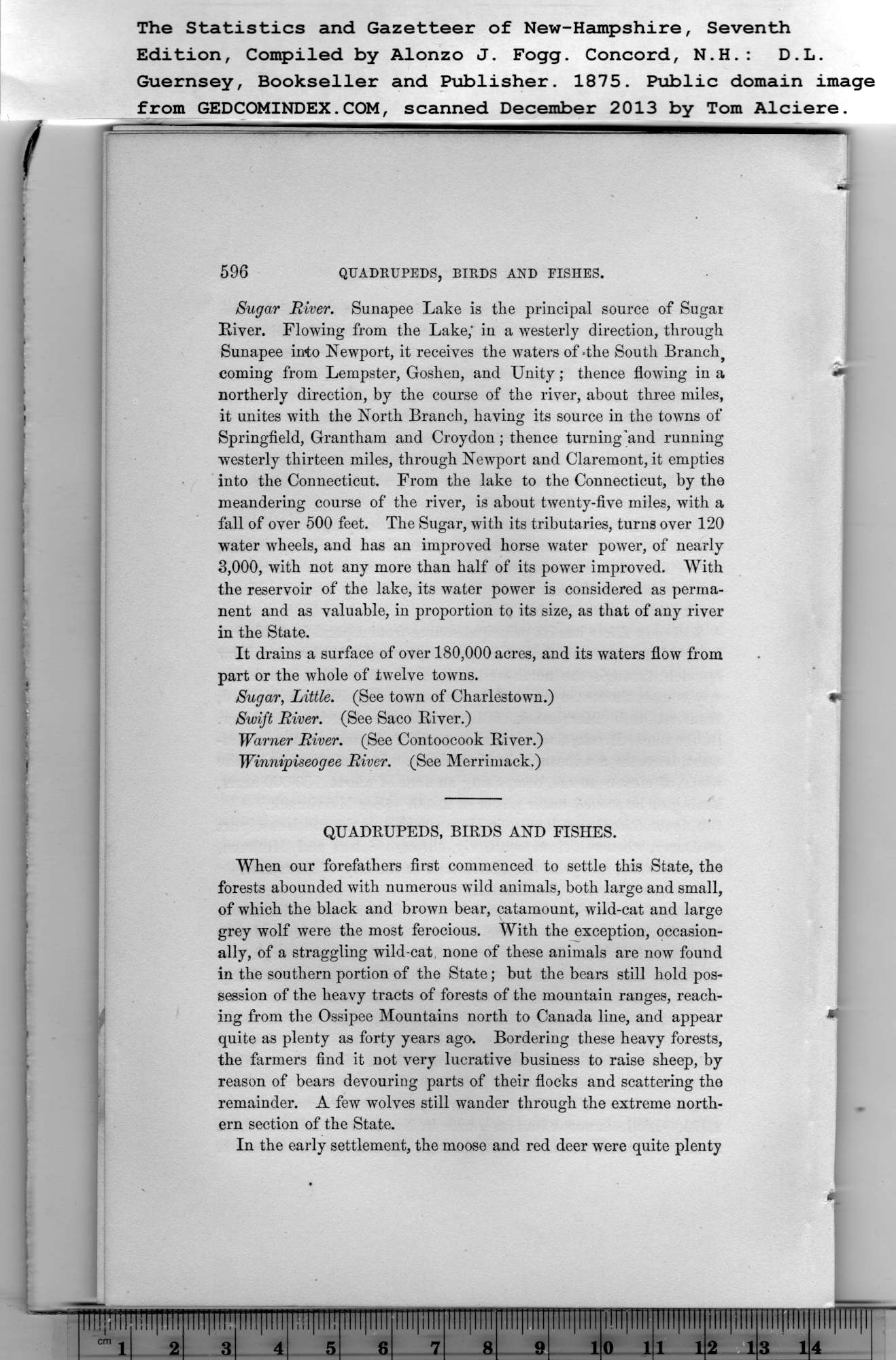|
596 QUADRUPEDS, BIRDS AND FISHES.
Sugar River. Sunapee Lake is the principal source of Sugar
River. Flowing from the Lake,’ in a westerly direction, through
Sunapee into Newport, it receives the waters of .the South Brandy
coming from Lempster, Goshen, and Unity; thence flowing in a
northerly direction, by the course of the river, about three miles,
it unites with the North Branch, having its source in the towns of
Springfield, Grantham and Croydon; thence turning'and running
westerly thirteen miles, through Newport and Claremont, it empties
into the Connecticut. From the lake to the Connecticut, by the
meandering course of the river, is about twenty-five miles, with a
fall of over 500 feet. The Sugar, with its tributaries, turns over 120
water wheels, and has an improved horse water power, of nearly
3,000, with not any more than half of its power improved. With
the reservoir of the lake, its water power is considered as perma-
nent and as valuable, in proportion to its size, as that of any river
in the State.
It drains a surface of over 180,000 acres, and its waters flow from
part or the whole of twelve towns.
Sugar, Little. (See town of Charlestown.)
Swift River. (See Saco River.)
Warner River. (See Contoocook River.)
Winnipiseogee River. (See Merrimack.)
QUADRUPEDS, BIRDS AND FISHES.
When our forefathers first commenced to settle this State, the
forests abounded with numerous wild animals, both large and small,
of which the black and brown bear, catamount, wild-cat and large
grey wolf were the most ferocious. With the exception, occasion-
ally, of a straggling wild-cat, none of these animals are now found
in the southern portion of the State; hut the bears still hold pos-
session of the heavy tracts of forests of the mountain ranges, reach-
ing from the Ossipee Mountains north to Canada line, and appear
quite as plenty as forty years ago. Bordering these heavy forests,
the farmers find it not very lucrative business to raise sheep, by
reason of bears devouring parts of their flocks and scattering the
remainder. A few wolves still wander through the extreme north-
ern section of the State.
In the early settlement, the moose and red deer were quite plenty
PREVIOUS PAGE ... NEXT PAGE
This page was written in HTML using a program written in Python 3.2
|
